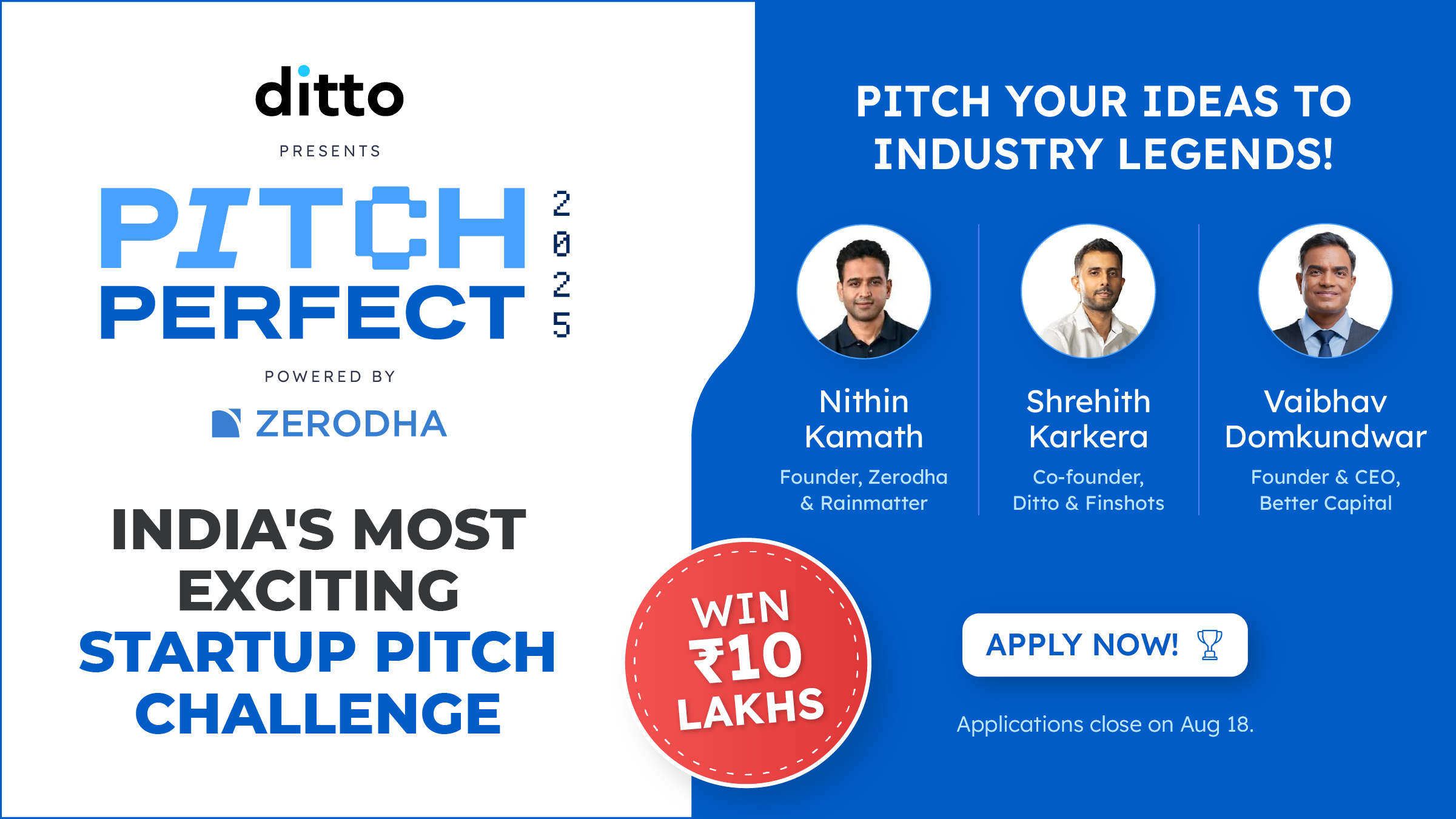Will India binge on micro dramas?

In today’s Finshots, we tell you about the rise of micro dramas and whether its success in China and the US can be replicated in India.
But before we begin, if you’re someone who loves to keep tabs on what’s happening in the world of business and finance, then hit subscribe if you haven’t already. If you’re already a subscriber or you’re reading this on the app, you can just go ahead and read the story.
The Story
In the year 2000, the average human attention span was around 12 seconds. That’s what research would tell us years later. But way before this stat became popular on the internet, one company may have already sensed it and tried to turn it into an opportunity. That company was Vine.
If the name rings a bell, great. But for those who don’t remember, Vine was the birthplace of modern internet fame. Many early internet stars like Ashish Chanchlani, Jose Covaco or Logan Paul, found their first audience on Vine.
Launched in 2013, it was a short-form video app that let users upload six-second looping clips. Six seconds, that’s it! But it exploded in popularity because at the time, there was nothing else quite like it.
Of course, that unique edge didn’t last long. Snapchat, Instagram and TikTok quickly followed. And Twitter (now X) also tried to cash in by acquiring Vine but couldn’t quite figure out what to do with it. So Vine was eventually killed in 2017.
Short-form videos, though, didn’t die. For over a decade now, it has been social media’s golden goose. Whether it’s Reels or Shorts, users are glued to bite-sized content. And just when it seemed like short videos couldn’t innovate any further, some folks in China came up with a new twist called micro dramas, or duanju as they’re called in Chinese.
At first glance, you could mistake them for just another content trend, but micro dramas are quickly turning into a serious business.
Officially recognised as a genre in 2020, these bite-sized shows are a hot commodity in China. By the end of 2024, 662 million domestic viewers tuned in to watch these, and the market raked in CN¥50.5 billion (about $7 billion), even overtaking China’s box office for the very first time!
And there’s a reason why this is happening.
Micro dramas are basically mini TV shows made for your phone. Think of them as a mashup of soap operas, web series and Reels, designed for short attention spans and endless scrolling.
Sidebar: Some studies even say that our attention span has now dropped to just 8 seconds!
Each episode is just 1 to 3 minutes long, shot vertically like Instagram Reels or YouTube Shorts. They’re fast-paced, packed with drama whether it’s romance, betrayal or even vampire stories, and almost always end in cliffhangers designed to keep you watching one after another. You can finish a few episodes over a chai or coffee break or binge an entire series in just a few hours. So it’s easy to stay hooked.
Sure, they’re different from user generated short-form videos on social media, because they need real film sets, actors and slightly higher production budgets. But they’re still cheaper to make than a full-fledged web series. All you really need is a juicy story and a few decent actors, even if they’re not famous. They’re shot on compact, multipurpose sets and wrapped up in days.
The returns are huge too. To put things in perspective, on Kuaishou, one of China’s biggest short video platforms, 270 million people watch micro dramas every day. That’s 70% of their daily active users (DAU), with 94 million paid users binge-watching over 10 episodes a day — a 50% increase from last year.
With numbers like these, it was only a matter of time before the rest of the world took notice and the trend hit the US.
All thanks to Joey Jia, the CEO of Crazy Maple Studio and the founder of ReelShort, one of the most popular micro drama apps, who saw how addictive these shows were in China and figured the format would work globally.
And as it turns out, he was right.
In 2024 alone, the top 10 micro drama apps outside China, including ReelShort, pulled in over $1.7 billion. That’s nearly a quarter of the global market. And guess what? Nearly half of that came from US viewers.
And now, Indian players want to replicate their success back at home. Just last month, ZEE Entertainment teamed up with content startup Bullet to launch a micro drama app. Others like Kuku FM and ReelSaga, including big digital players, are also jumping in. VCs (Venture Capitalists) are taking notice as well. So it's no surprise that in 2025 alone, micro drama platforms in India have raised $44 million, which is 55% higher than last year.
But will they take off, you ask?
Well, the ingredients are all there.
India’s market is ripe for snackable storytelling, with over 900 million internet connections and a mobile-first audience hooked on Reels and Shorts. And since micro dramas sit perfectly between mindless scrolling and a full-blown web series, they’re gaining traction in Tier-2 and Tier-3 cities and towns, where students, homemakers and small business owners are looking for content that fits around their daily routines. Also, rolling content out in local languages helps it land emotionally. Gen Z and young millennials, raised on fast-paced visuals, are loving it. And just like in the US, where women between 25 and 35 turned out to be the core audience because they connected more with quick and dramatic storylines, India seems to have a ready crowd too.
But here’s the thing. Micro dramas could only work until the content is free or backed by ads and brand collabs. The moment it flips to a pay-per-episode model, like in China or the US, scaling up could get tricky.
Take China. Most micro drama apps there run on a gamified freemium model. The first 10–20 episodes are free — often served as ads on other OTTs or TikTok to lure users. After that, users must pay to unlock more episodes. Viewers can buy in-app coins with real money or watch reward ads to earn them. It’s pretty much the same in the US too. On ReelShort, for example, you watch a bunch of episodes for free, but if you want the ending, you’ll have to pay.
But the Indian market is a whole different ball game.
Getting people to pay for short-form content isn’t going to be easy. Not when platforms like YouTube and Instagram offer an endless supply for free. Sure, apps can kick things off with an AVoD (advertising-based video on demand) model that makes viewers watch a few ads in exchange for episodes. But scaling beyond that could be tough.
India’s a price-sensitive market, and the average revenue per user (ARPU) for these subscriptions tends to be pretty low. Plus, digital ad rates here are far lower than what platforms earn in China or the US, which means that apps can’t just keep running on the AVoD model either. Because ad revenues may not even cover costs, let alone bring in profits. After all, micro dramas aren’t your average user-generated clips. They need proper sets, actors, editing and post-production. So if platforms rely only on ad money, budgets could be stretched thin, and that could take a toll on both quality and viewer retention.
A freemium model could still work, with a bunch of free episodes at the start, some ads sprinkled in and subscriptions unlocking the rest. But a more practical way to make micro dramas sustainable might be brand-integrated storytelling, where the plot naturally advertises products or services. Or even micropayments and shorter subscription plans that feel easier on the pocket.
But yeah, whether this turns into a money-spinner for VCs here, like the quick ROI (return on investment) micro dramas pulled off in China and the US, is anyone’s guess.
Until then…
Fun fact: While research suggests that the human attention span has dropped to 8 seconds, supposedly even shorter than a goldfish’s, that stat is often misunderstood. It simply means that we take about 8 seconds to decide if something’s worth our attention or not. If it clicks, we’re in. That’s also why we can binge watch a series or scroll content for hours.
Love micro dramas or know someone hooked on them?
Share this on WhatsApp, LinkedIn or X to help them and everyone else figure out if this content format makes business sense.
🔊Introducing Pitch Perfect 2025!

If you've been following us for a while, you know our story didn't begin in a corporate boardroom. It started in a college dorm room with 3 broke students who chose to skip placements and chase something bigger.
That something was Finshots.
Today, Finshots reaches over 500,000 readers, and through Ditto, we've empowered 800,000+ Indians to make smarter insurance decisions.
Now, we're looking for the next game-changing idea to back.
Introducing Pitch Perfect 2025 – a flagship startup pitch challenge powered by Zerodha.
So, if you've got a BIG idea that could help Indians get better with money, pitch it to us!
What's at stake:
✅₹10,00,000 in prizes
✅Potential funding from Zerodha Rainmatter
✅All-expenses-paid trip to Bangalore to pitch directly to Nithin Kamath and industry veterans
Ready? 👉Apply Now!
